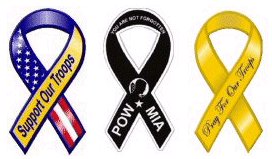The Bomb Under the Abaya
By Judith Miller
Women who become suicide bombers
The suicide vest, stuffed with explosives, nails, ball bearings and various metal fragments, weighed close to 40 pounds. But it felt “like roses on my shoulders,” Shefa’a al-Qudsi told me when I interviewed her this spring in an Israeli security prison near Tel Aviv. “I was even more eager to do it after I put the vest on,” said the now 31-year-old Palestinian from Tulkarem. “Many would have died. No fence in the world would have stopped me.”
Wafa al-Biss, who is now 23, had the opposite reaction when she tried on the explosive pants she had been given for her mission. “I told them the pants were too tight and too heavy,” she said, tugging at her headscarf with her scarred fingertips as she recounted her conversation with the men who were sending her to kill and die. “They said: ‘Don’t worry. We have a bigger size for you!’ I looked in the mirror and didn’t recognize myself,” al-Biss told me, her eyes welling with tears. “And I thought: What am I doing here?”
The two women with their opposite reactions to the prospect of becoming human bombs had been brought together by Israeli counterterrorism officials in Ward 12 of Hasharon Security Prison, an austere facility a half-hour drive north of Tel Aviv. The sprawling, multi-story concrete structure, surrounded by concertina wire and florescent-lit guard towers, is located in the Plain of Sharon where lush citrus groves embrace the prison in a sea of green. Clearly visible from a major highway, tens of thousands of Israeli commuters pass the unmarked facility each day en route to Tel Aviv.
Wafa al-Biss and Shefa’a al-Qudsi live among more than 60 other Palestinian women involved in terrorism — would-be bombers, spotters, supporters of and counselors to future shaheeds and shaheedas, male and female martyrs, as Palestinians call them. Twelve of some 22 women who have participated since 2002 in such suicide missions survived and are now confined here and in similar prisons, where Israeli intelligence officials have been studying them intensively. Cynics may say that these women prisoners were the beneficiaries of second thoughts, but Israeli officials assert that most of them, including Shefa’a al-Qudsi, were either apprehended before they could reach their targets, or, as in the case of Wafa al-Biss, discovered too late that the devices they were wearing were faulty.
What Israeli officials have more difficulty explaining is why they chose to sacrifice themselves to kill Israelis. Why are so many so eager to do something so profoundly contrary to the human instinct for survival?
Because I found conflicting and only partial answers in the many books that have already been written on suicide attacks, I went to the gates of Hasharon prison to talk to the women themselves. Since Israel has in detention among the largest number of people who have tried and failed to carry out istishhad, or religiously blessed self-sacrifice — nearly half of the 380 aspiring suicide bombers since 2002 have failed or were stopped before carrying out their missions — it seemed a natural place to start.
What led Palestinians to this deadly choice? Were the motives similar to those of the seemingly endless reservoir of suicide bombers who have killed so many Iraqis and Americans in Iraq? Are the motives similar to those of suicide bombers in Afghanistan, where U.S. soldiers and Afghan civilians alike now face growing peril? Are New Yorkers and other Americans likely to confront suicide attacks like those that Israelis, Sri Lankans, Turks and others have endured?
...
Pertinent Links:
1) The Bomb Under the Abaya
Tuesday, June 19, 2007
Subscribe to:
Post Comments (Atom)




No comments:
Post a Comment